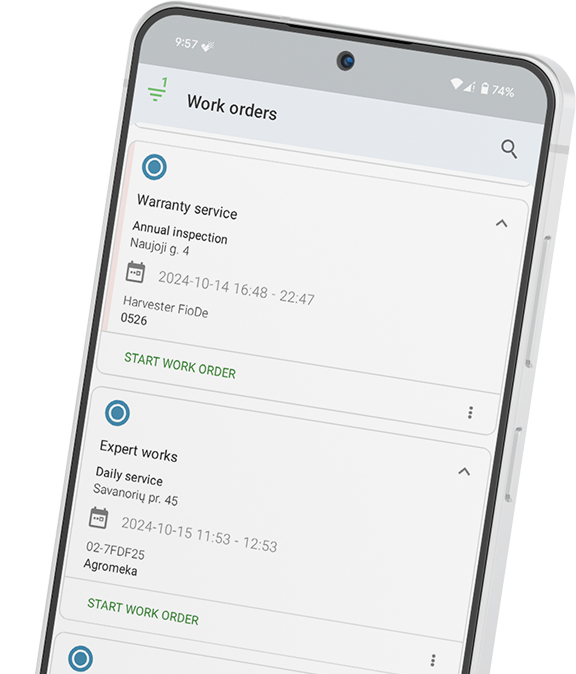Bring simplicity to your field service operations.
Our list of integrations is updated frequently. Explore each integration in its own separate page for more information.
We discussed the importance of cost-effective building maintenance, automation, and connection. Although 2020 happened to be different than many experts predicted, these trends kept their momentum.
After the worldwide pandemic, trends like building automation, robotics, and IoT integration are more prevalent than ever. Facility automation solutions limit human-to-human contact, expedites daily technical operations, and prevent emergencies and downtime.
Smart and automated buildings combine IoT integration, artificial intelligence, and robotics. It can be anything from a large office building to private homes and apartments. IoT integrations connect devices and systems to one network where the administrator can access it and inspect the equipment.
AI algorithms can prevent emergencies by leveraging the power of data. For example, data disparities alert the system when the time to audit the property is close and employees when unexpected changes occur. Besides safety and efficiency benefits, facility automation solutions provide multiple advantages for facility and business owners that are managing operations.
Building automation solutions vary a lot. For example, the facility can be fully automated or have only some computerized systems.
Here are some facility automation solutions for business owners:
Homeowners can rely on HVAC systems to connect air conditioning, ventilation, and heating to one network to control temperature and air quality on site. This system automatically adjusts the temperature to air quality changes. One of the recent IoT developments in the HVAC sector is 720° Analytics. The system monitors and analyzes indoor climate, air quality, pollution, and temperature, ensuring better efficiency and overall facility automation. It’s a cost-effective and energy-saving solution, as the system itself controls changes.
An example of using IoT sensors is when a door opens right before a person steps in. Such solutions are not new but rather essential in today’s competitive environment. This feat of modern engineering limits social contact and improves security. For example, a building can be accessed using face recognition, scanning a card, or a fingerprint.
Many devices in our homes consume energy even when we aren’t using them. While private housing costs might not break the bank, companies with office spaces need smart energy distribution to keep the costs and impact on the environment low. Facility automation solutions monitor energy distribution and control its usage.
Automated IoT security systems such as emergency lighting, alarm, videos, disaster prevention are essential in keeping the property and connected information safe. In addition, automated safety systems protect the site from external attacks and natural disasters such as lightning, energy shortage, or system failures. One could argue that these systems can even keep businesses at ease about employee safety and well-being.
Many private and small business owners are afraid to automate their premises because they might lack insight into how the system works. Installing automated systems doesn’t mean that you have to rebuild your facility, open new jobs or invest millions in your business. Instead, it can be done over time and eventually reduce more costs.
Robotic technology, combined with AI, can prevent emergencies and protect a building from downtime. These IoT devices collect data and identify its patterns. So whether it’s HVAC systems and air quality or facility security, automation helps see deviations and identify their source.
Building owners and private households use professional services to manage their premises and provide maintenance. For example, a managing company can see when some IoT devices need an audit and can schedule preventative maintenance more accurately to avoid system or device failures. In this way, employees are being utilized the right way and company resources are not being wasted.
While the costs of preparing and installing automated systems vary depending on your needs, it pays off in the long run by saving energy and time. Most of the next-generation facility automation solutions are built to prevent resource leaks and save energy. In addition, they can be self-maintaining, which also reduces costs spent on repair and physical maintenance.
Automated systems can be almost self-maintaining, but it’s important to find a company that can ensure smooth installation and maintenance. Companies without an effective business operation system can’t go far.
Frontu offers versatile field service management services for facility maintenance companies through its cutting-edge software. We help organize tasks, log timesheets, schedule maintenance, organize employee schedules, dispatching, synchronize jobs on different sites, record warehouse balances, and ensure your company’s operational efficiency.
In a world where even the slightest of advantages can have a major impact, an FSM software that can provide facility automation solutions can go a long way. It allows you to assess employee performance, identify a thorough company profile, set the team’s KPIs, gauge supplier SLA, and get detailed performance reports. Book a demo to see how Frontu can work for your company and clients.

Our list of integrations is updated frequently. Explore each integration in its own separate page for more information.

Link copied!